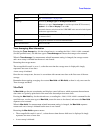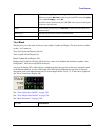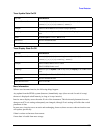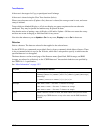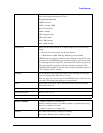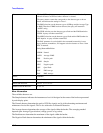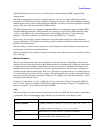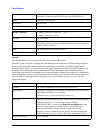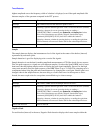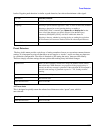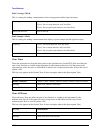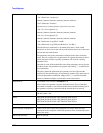
1313
Trace/Detector
The Quasi-Peak detector is a fast-rise, slow-fall detector used in making CISPR compliant EMI
measurements.
The EMI-Average detector provides a standard means to “smooth” the signal while still providing
compliance to CISPR pulse response standards. It displays the average value of the amplitude envelope,
rather than the average value of sample-detected amplitude, and uses an advanced algorithm to realize a
lowpass filter that conforms to the latest CISPR standard.
The RMS Average detector is a frequency dependent RMS or Averaging filter, used in making CISPR
compliant EMI measurements, which performs one averaging process (in the VBW hardware) on the
"power" (a.k.a. RMS) scale, and another process on the voltage scale using a "meter movement
simulator". This filter conforms to the 2007 revision of the CISPR 16–1–1 standard.
Because they may not find a spectral component's true peak, neither average nor sample detectors
measure amplitudes of CW signals as accurately as peak or normal, but they do measure noise without
the biases of peak detection.
When the Detector choice is Auto, the detector selected depends on marker functions, trace functions,
average type, and the trace averaging function.
When you manually select a detector (instead of selecting Auto), that detector is used regardless of other
test set settings.
Multiple Detectors
The test set always provides the requested detector on the specified trace. Depending on the detectors
requested the test set can provide up to three different detectors simultaneously, within the constraints of
its digital processing algorithms. Some detectors utilize more resources; the Quasi-Peak detector, for
example, utilizes most of the digital IF’s resources, and the hardware in some test sets is incapable of
providing another detector when Quasi-Peak is on. If the limit of system resources is exceeded, detectors
on some existing traces may be forced to change. When this happens, they change to match the detector
just requested, and a message is generated: “Detector <X> changed due to physical constraints”, where
X might contain multiple values.
Example: User has traces 1, 2, and 3 with Peak, Average, and Negative Peak. User specifies QPD for
trace 1. Traces 2 and 3 also change to QPD and we generate the message “Detector 2,3 changed due to
physical constraints”. Now all three traces have the QPD.
Auto
This sets the detector for the currently selected trace to Auto. (For SCPI, the trace number is specified as
a subopcode.) This will immediately apply the auto rules to determine a new detector value.
Key Path Trace/Det, Detector
Remote Command [:SENSe]:DETector:TRACe[1]|2|3|4|5|6:AUTO ON | OFF | 1 |
0
[:SENSe]:DETector:TRACe[1]|2|3|4|5|6:AUTO?
Example DET:TRACE2:AUTO ON sets trace 2 detection to automatic.
Dependencies The auto detector rules depend upon marker type, averaging state and type,
trace state writing mode, and trace active state.



